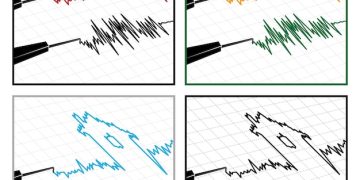Investing in Dividend Stocks: Your Pathway to Passive Income in 12 Months

Investing in dividend stocks offers a strategic approach to building a passive income stream relatively quickly, potentially generating returns within the next 12 months through consistent dividend payouts and long-term capital appreciation.
Are you looking for a reliable way to generate passive income? Investing in dividend stocks might be the answer. This approach allows you to earn regular income from your investments, often within a year, while also benefiting from potential capital appreciation.
Understanding Dividend Stocks
Dividend stocks are shares of companies that distribute a portion of their earnings to shareholders. These distributions, known as dividends, can provide a steady income stream, making them an attractive option for investors seeking passive income.
Before diving in, it’s essential to understand what makes a dividend stock tick.
What are Dividends?
Dividends are payments made by a corporation to its shareholders, out of its profits. The amount is typically stated as a dollar amount per share. Companies that pay dividends are often well-established, financially stable, and profitable.
Why Companies Pay Dividends
Companies choose to pay dividends for several reasons. It can signal financial strength and stability to investors, attracting more shareholders and potentially increasing the stock’s value. Dividends are also a way to reward shareholders for their investment and loyalty.

Here’s a quick overview of the benefits of investing in dividend stocks:
- Steady Income Stream: Regular dividend payments provide a reliable source of income.
- Potential for Growth: Dividend stocks often appreciate in value over time.
- Tax Advantages: Dividends may be taxed at a lower rate than other forms of income. (Consult a tax professional for specific advice).
In conclusion, understanding dividend stocks involves recognizing them not only as income sources but also as indicators of a company’s financial health and commitment to its shareholders. This foundational knowledge is crucial for building a successful passive income stream.
Benefits of Building a Passive Income Stream
A passive income stream can provide financial security and freedom. It allows you to earn money even when you’re not actively working, which can be particularly beneficial in times of uncertainty or when pursuing other interests.
Building a passive income stream offers several advantages.
Financial Security
Passive income can supplement your primary income, providing a safety net in case of job loss or unexpected expenses.
Financial Freedom
With sufficient passive income, you can gain greater control over your time and lifestyle, pursuing passions and hobbies without financial constraints.
Here are some added perks of creating a passive income stream from dividend stocks:
- Inflation Hedge: Some companies increase their dividend payouts over time, helping to offset inflation.
- Compounding Returns: Reinvesting dividends can accelerate your investment growth through the power of compounding.
- Diversification: Investing in a variety of dividend stocks can diversify your portfolio and reduce risk.
In summary, creating a passive income stream offers a pathway to financial security and freedom. By understanding and leveraging the benefits of this approach, you can strategically build a more secure and fulfilling financial future.
Choosing the Right Dividend Stocks
Selecting the right dividend stocks is crucial for building a reliable passive income stream. Not all dividend stocks are created equal, and it’s essential to evaluate a company’s financial health, dividend history, and payout ratio.
Choosing the right stocks requires careful analysis.
Evaluate Financial Health
Look for companies with strong balance sheets, consistent revenue growth, and a history of profitability. A healthy company is more likely to sustain its dividend payments.
Dividend History
Check the company’s dividend history to see if it has a track record of consistently paying and increasing dividends over time. This indicates a commitment to rewarding shareholders.
Key factors to consider when choosing dividend stocks also include:
- Payout Ratio: The payout ratio is the percentage of earnings a company pays out as dividends. A lower payout ratio suggests the dividend is more sustainable.
- Yield: The dividend yield is the annual dividend payment divided by the stock price. A higher yield may seem attractive, but also indicates something might be wrong, so investigate carefully.
- Industry: Consider the industry in which the company operates. Some industries are more stable and dividend-friendly than others.
In conclusion, choosing the right dividend stocks involves a comprehensive evaluation of a company’s financials, dividend history, and the broader industry landscape. By focusing on stability, commitment to dividends, and sustainable payout ratios, investors can build a reliable passive income stream.

Strategies for Building Your Dividend Portfolio in 12 Months
To build a passive income stream from dividend stocks in the next 12 months, it’s crucial to have a clear investment strategy. This includes setting realistic goals, diversifying your portfolio, and reinvesting dividends.
A well-defined strategy is essential for success.
Set Realistic Goals
Determine how much passive income you want to generate from dividends and set a realistic timeline for achieving your goal. This will help you stay focused and motivated.
Diversify Your Portfolio
Invest in a variety of dividend stocks across different sectors and industries to reduce risk. Diversification can help protect your portfolio from market volatility.
Here are some actionable steps to build your dividend portfolio effectively:
- Reinvest Dividends: Use dividend payments to purchase additional shares of the same stock or other dividend stocks. This can accelerate your investment growth through compounding.
- Dollar-Cost Averaging: Invest a fixed amount of money at regular intervals, regardless of the stock price. This can help you avoid timing the market and reduce the impact of volatility.
- Review and Adjust: Regularly review your portfolio and make adjustments as needed. This may involve selling underperforming stocks or adding new ones to maintain diversification.
In summary, building a dividend portfolio within 12 months requires a strategic approach involving realistic goal setting, diversification, and consistent reinvestment. By implementing these strategies and regularly reviewing your progress, investors can steadily build a reliable passive income stream.
Potential Risks and How to Mitigate Them
While dividend stocks can be a great way to generate passive income, it’s important to be aware of the potential risks. These include dividend cuts, market volatility, and industry-specific challenges.
Understanding the risks is critical for protecting your investment.
Dividend Cuts
Companies can reduce or eliminate dividend payments if they experience financial difficulties. This can significantly impact your income stream.
Market Volatility
Stock prices can fluctuate due to market conditions, economic factors, or company-specific events. This can affect the value of your dividend portfolio.
Effective mitigation strategies include:
- Research: Do thorough research on the companies you invest in.
- Diversification: Diversification can help protect your portfolio.
- Conservative Approach: Diversify into different instruments, if you are risk adverse.
In conclusion, while investing in dividend stocks offers a pathway to passive income, it’s crucial to acknowledge and mitigate potential risks. By conducting thorough research, diversifying your portfolio, and continuously monitoring your investments, investors can safeguard their income stream and build a resilient dividend portfolio.
Tracking Your Progress and Making Adjustments
To ensure your dividend portfolio is on track to meet your passive income goals, it’s essential to track your progress regularly. This involves monitoring dividend payments, portfolio performance, and market conditions.
Regular monitoring keeps you informed and in control.
Monitor Dividend Payments
Keep track of the dividend payments you receive from each stock in your portfolio. This will help you assess whether your income stream is meeting your expectations.
Portfolio Performance
Evaluate the overall performance of your portfolio, including both dividend income and capital appreciation. This will give you a comprehensive view of your investment returns.
Making necessary adjustments might include the following:
- Rebalancing: Rebalance your portfolio periodically to maintain your desired asset allocation. This may involve selling stocks that have outperformed and buying those that have underperformed.
- Adjusting: Adjust your investment strategy based on changes in market conditions or your financial goals. Always ask your financial advisor for help.
In summary, tracking your progress and making necessary adjustments are integral to optimizing your dividend portfolio for passive income generation. By consistently monitoring dividend payments, portfolio performance, and market conditions, investors can fine-tune their strategies and maximize their returns.
| Key Point | Brief Description |
|---|---|
| 💰 Dividend Stocks | Shares that distribute earnings, providing consistent income. |
| 📈 Benefits | Financial security, potential for growth, and some tax advantages. |
| 🔎 Choosing Stocks | Evaluate financial health, dividend history, and payout ratio. |
| 🎯 Strategies | Diversify, reinvest dividends, and use dollar-cost averaging. |
Frequently Asked Questions
▼
Dividend stocks are shares of companies that distribute a portion of their earnings to shareholders regularly, typically quarterly or annually, as a way to reward investors.
▼
You can begin by opening a brokerage account, researching dividend-paying companies, and purchasing shares through your brokerage platform. Consider starting with a diversified portfolio.
▼
A good dividend yield depends on your risk tolerance and investment goals, but generally, a yield between 2% and 5% is considered healthy, but always compare to industry peers for context.
▼
While generally safer than growth stocks, dividend stocks still carry risk. Companies can cut dividends, and stock prices can fluctuate, so diversification and research are essential for mitigating risk.
▼
Dividends are typically paid out quarterly, but some companies may pay them monthly, semi-annually, or annually. The frequency depends on the company’s dividend policy and financial performance.
Conclusion
Investing in dividend stocks is a potent strategy for crafting a passive income stream within 12 months. By understanding the essentials of dividend stocks, choosing the appropriate investments, employing strategic approaches, and vigilantly monitoring your portfolio, you can smoothly navigate towards financial security. Though risks are inherent, a well-informed and diversified strategy can harness the opportunity, making dividend investing an ideal pathway to accomplishing your income aspirations.





